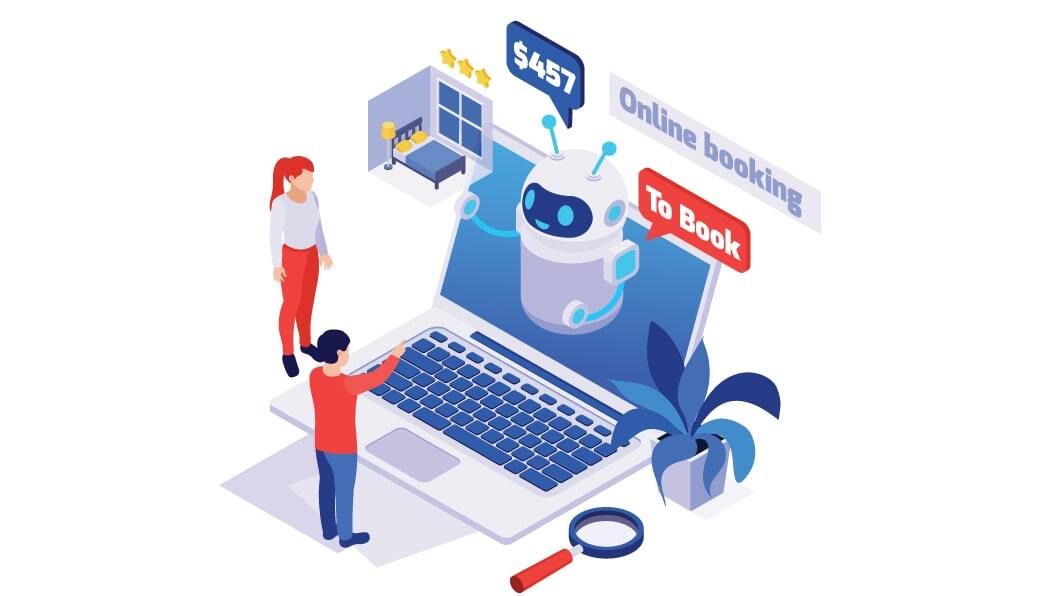
Chatbots: Enhancing Customer Service and Support
Introduction
Chatbots have become increasingly prevalent in customer service and support, revolutionizing the way businesses interact with their customers. Powered by artificial intelligence and natural language processing (NLP), chatbots are automated conversational agents that can simulate human-like interactions. In this article, we will explore how chatbots are enhancing customer service and support, improving efficiency, and providing seamless user experiences.
Benefits of Chatbots in Customer Service

- 24/7 Availability:
Unlike human agents who have limited working hours, chatbots can provide round-the-clock support. They are always available to assist customers, answer queries, and provide information, ensuring prompt responses and reducing customer waiting time.
- Efficient and Scalable Support:
Chatbots are capable of handling multiple customer interactions simultaneously. They can handle a high volume of inquiries without experiencing fatigue or delays. This scalability enables businesses to efficiently manage customer support operations, even during peak periods.
- Quick and Accurate Responses:
Chatbots are designed to provide instant responses to customer queries. They can analyze customer inputs, understand the intent behind the messages, and retrieve relevant information to provide accurate and timely responses. This reduces customer frustration and improves satisfaction.
- Personalized Interactions:
Advanced chatbots utilize NLP algorithms to understand and interpret customer messages. They can analyze customer preferences, purchase history, and past interactions to personalize their responses. By providing tailored recommendations and solutions, chatbots create a personalized customer experience.
- Automated Task Completion:
Chatbots can perform various tasks and transactions on behalf of customers, such as placing orders, scheduling appointments, and providing product recommendations. By automating these routine tasks, chatbots free up human agents’ time, allowing them to focus on more complex and specialized customer needs.
- Improved Customer Engagement:
Well-designed chatbots engage customers in interactive and conversational experiences. They can use rich media, including images, videos, and interactive buttons, to provide visually appealing and engaging interactions. This enhances customer engagement and strengthens brand loyalty.
Future Directions of Chatbots

The future of chatbots in customer service and support is promising, with several developments on the horizon:
- Advanced Natural Language Understanding:
Chatbots will continue to evolve their ability to understand and interpret natural language. Advancements in NLP and machine learning will enable chatbots to grasp more complex queries, idiomatic expressions, and nuances in human language, leading to more accurate and meaningful interactions.
- Emotional Intelligence and Empathy:
Research is being conducted to imbue chatbots with emotional intelligence. By recognizing and responding to customer emotions, chatbots can provide empathetic support and assistance. This development will contribute to more human-like interactions and improved customer satisfaction.
- Integration with Other Systems:
Chatbots will integrate more seamlessly with other systems and databases, allowing them to access and retrieve information from various sources. This integration will enhance their capabilities in providing comprehensive and accurate responses to customer inquiries.
- Multilingual Support:
As businesses operate in global markets, multilingual support will become increasingly important. Future chatbots will be equipped with multilingual capabilities, enabling them to communicate and assist customers in their preferred languages, regardless of geographical boundaries.
- Voice-Enabled Chatbots:
With the increasing popularity of voice assistants, chatbots will incorporate voice recognition and synthesis technologies. Voice-enabled chatbots will allow customers to interact through spoken language, providing a more natural and convenient communication channel.
Conclusion
Chatbots have emerged as powerful tools for enhancing customer service and support. With their 24/7 availability, scalability, quick responses, and personalized interactions, chatbots are transforming the way businesses engage with their customers. The future of chatbots holds even more potential, with advancements in natural language understanding, emotional intelligence, integration capabilities, multilingual support, and voice-enabled interactions.
By leveraging these advancements, businesses can offer enhanced customer experiences, improve operational efficiency, and strengthen customer relationships. Chatbots provide consistent and reliable support, ensuring that customers receive prompt assistance and accurate information at any time of the day. Moreover, they enable businesses to scale their customer service operations without incurring additional costs associated with hiring and training a large support team.
As chatbots continue to evolve, it is crucial for businesses to consider the following best practices:
- Designing Intuitive User Interfaces:
Creating chatbot interfaces that are user-friendly and intuitive is essential. Users should find it easy to interact with the chatbot, and the conversation flow should feel natural and conversational.
- Continuous Learning and Improvement:
Chatbots should be designed to learn and improve over time. By analyzing user interactions and feedback, businesses can identify areas for improvement and refine their chatbot’s responses to provide more accurate and helpful information.
- Monitoring and Human Oversight:
While chatbots can handle many customer inquiries independently, human oversight is still necessary. Monitoring chatbot conversations and stepping in when needed ensures that complex or sensitive issues are addressed appropriately.
- Seamless Integration with Human Support:
Chatbots should seamlessly integrate with human support agents when necessary. Transferring conversations from a chatbot to a human agent should be smooth, ensuring a seamless customer experience without any information loss.
- Regular Updates and Maintenance:
Chatbots should be regularly updated and maintained to stay aligned with changing customer needs, industry trends, and evolving technology. This includes keeping the chatbot’s knowledge base up to date and addressing any technical issues promptly.
In conclusion, chatbots are revolutionizing customer service and support, providing businesses with efficient and scalable solutions to meet customer needs. With ongoing advancements in natural language understanding, emotional intelligence, and integration capabilities, chatbots will continue to evolve, delivering even more personalized and seamless experiences. By embracing chatbot technology and implementing best practices, businesses can enhance customer satisfaction, streamline operations, and stay ahead in today’s competitive digital landscape.
FAQs
FAQ 1: Are chatbots capable of understanding complex queries and providing accurate responses?
Yes, chatbots are designed to understand complex queries by utilizing natural language processing (NLP) techniques. They analyze the input provided by the user, interpret the intent behind the message, and retrieve relevant information to generate accurate responses. However, the level of complexity that a chatbot can handle may vary depending on its design, training, and the available data.
FAQ 2: Can chatbots handle multiple languages?
Yes, chatbots can be programmed to handle multiple languages. With advancements in NLP and multilingual models, chatbots can understand and respond to queries in different languages. However, the level of proficiency and accuracy may vary across languages, depending on the training data and resources available for each language.
FAQ 3: How secure is the information shared with chatbots?
The security of information shared with chatbots depends on the implementation and the measures taken by the developers. Privacy and security should be a priority in chatbot development, and appropriate safeguards should be in place to protect user data. Encryption, access controls, and data anonymization techniques can be implemented to ensure the confidentiality and integrity of the information shared with chatbots.
FAQ 4: Can chatbots replace human customer support agents?
While chatbots can handle a wide range of customer inquiries, they may not be able to replace human customer support agents entirely. Certain complex or sensitive issues may require the expertise and empathy of a human agent. However, chatbots can complement human agents by handling routine inquiries, providing quick responses, and escalating more complex cases to human support when necessary. The collaboration between chatbots and human agents can enhance the overall customer support experience.
FAQ 5: How can businesses measure the effectiveness of their chatbots?
Businesses can measure the effectiveness of chatbots through various metrics, including customer satisfaction ratings, response time, resolution rate, and the number of successfully resolved inquiries. Feedback from customers can also provide valuable insights into the performance of chatbots. Regular monitoring, data analysis, and user feedback collection are essential for evaluating the performance and optimizing the effectiveness of chatbots in customer service and support.














